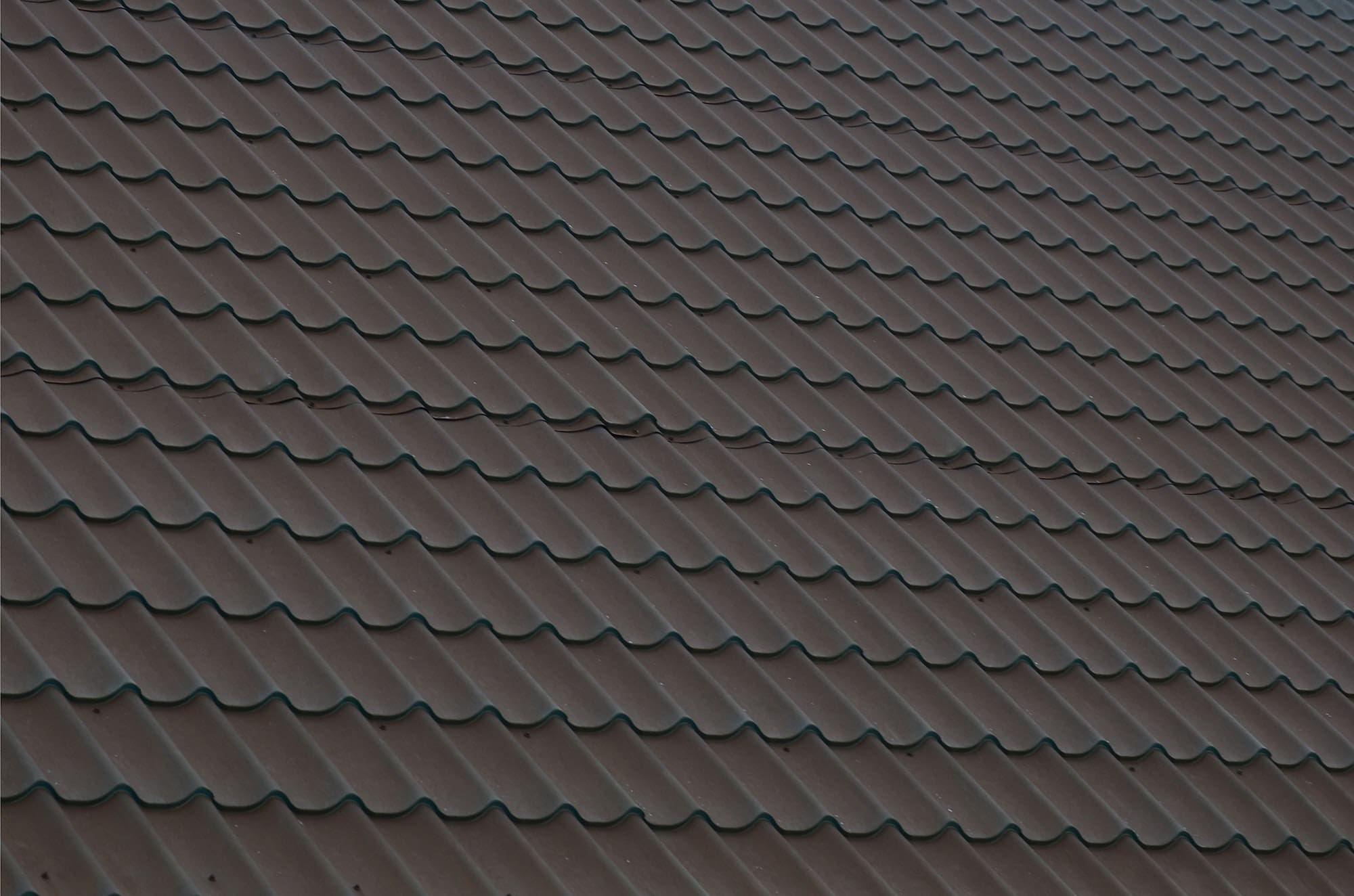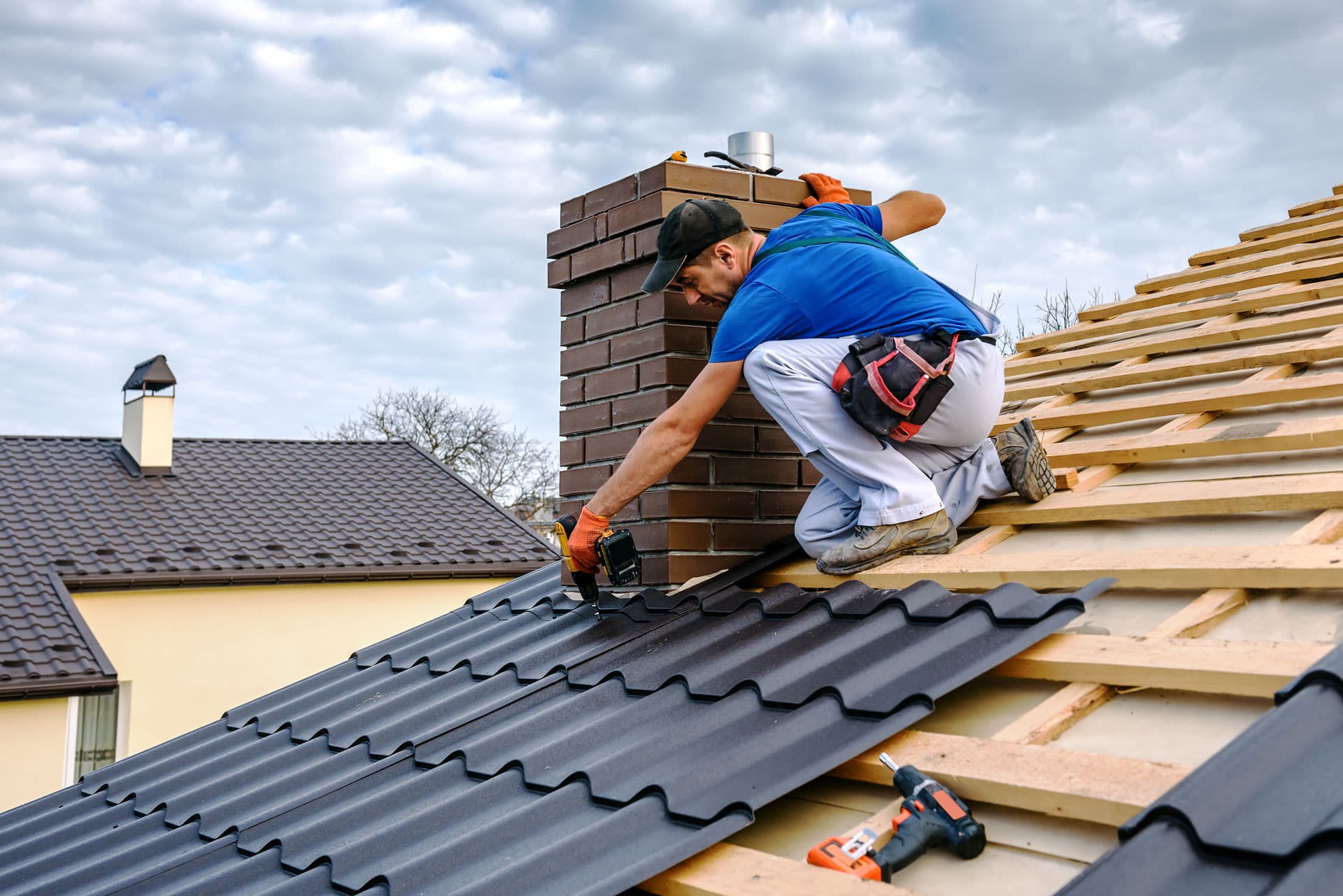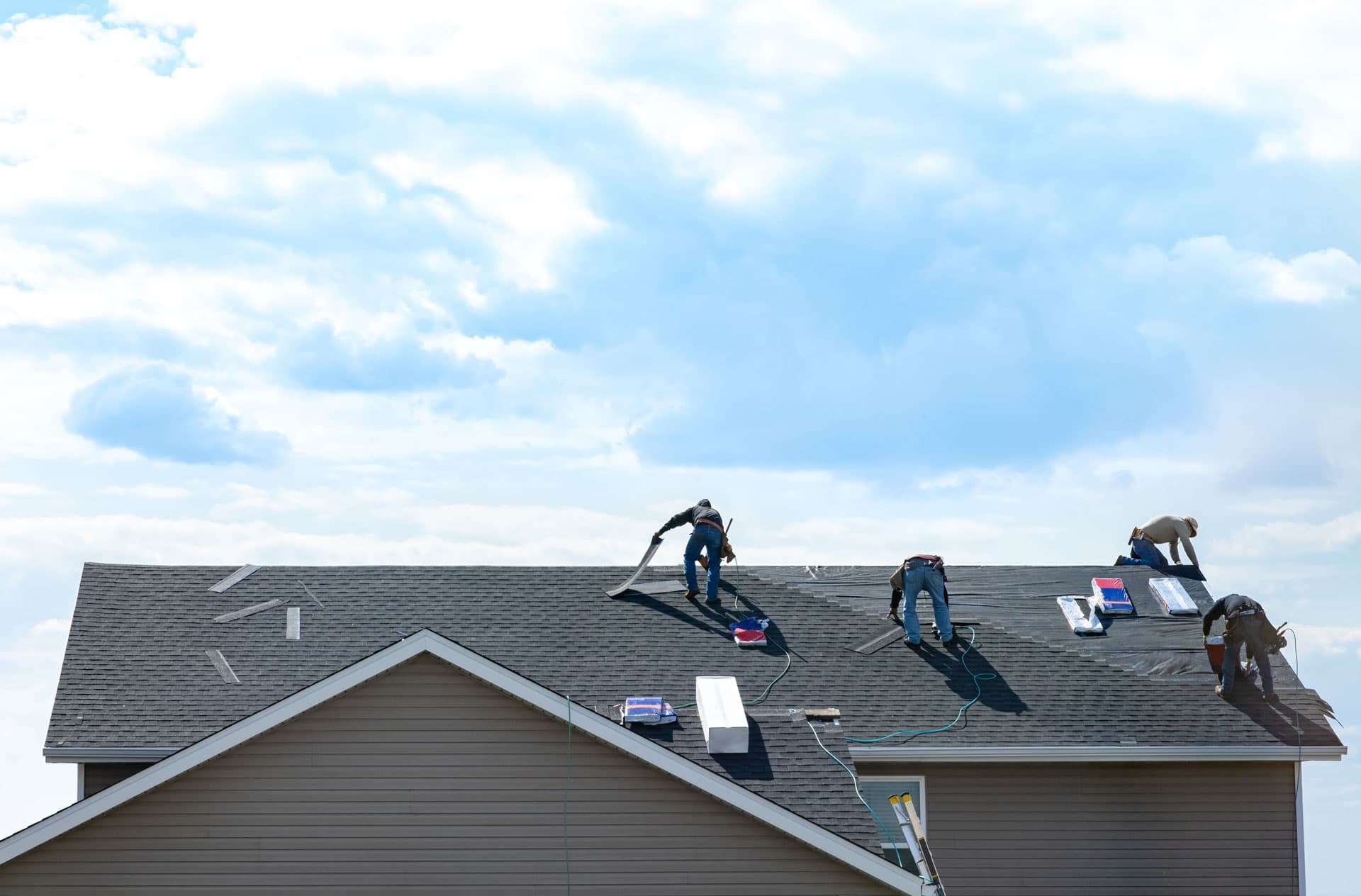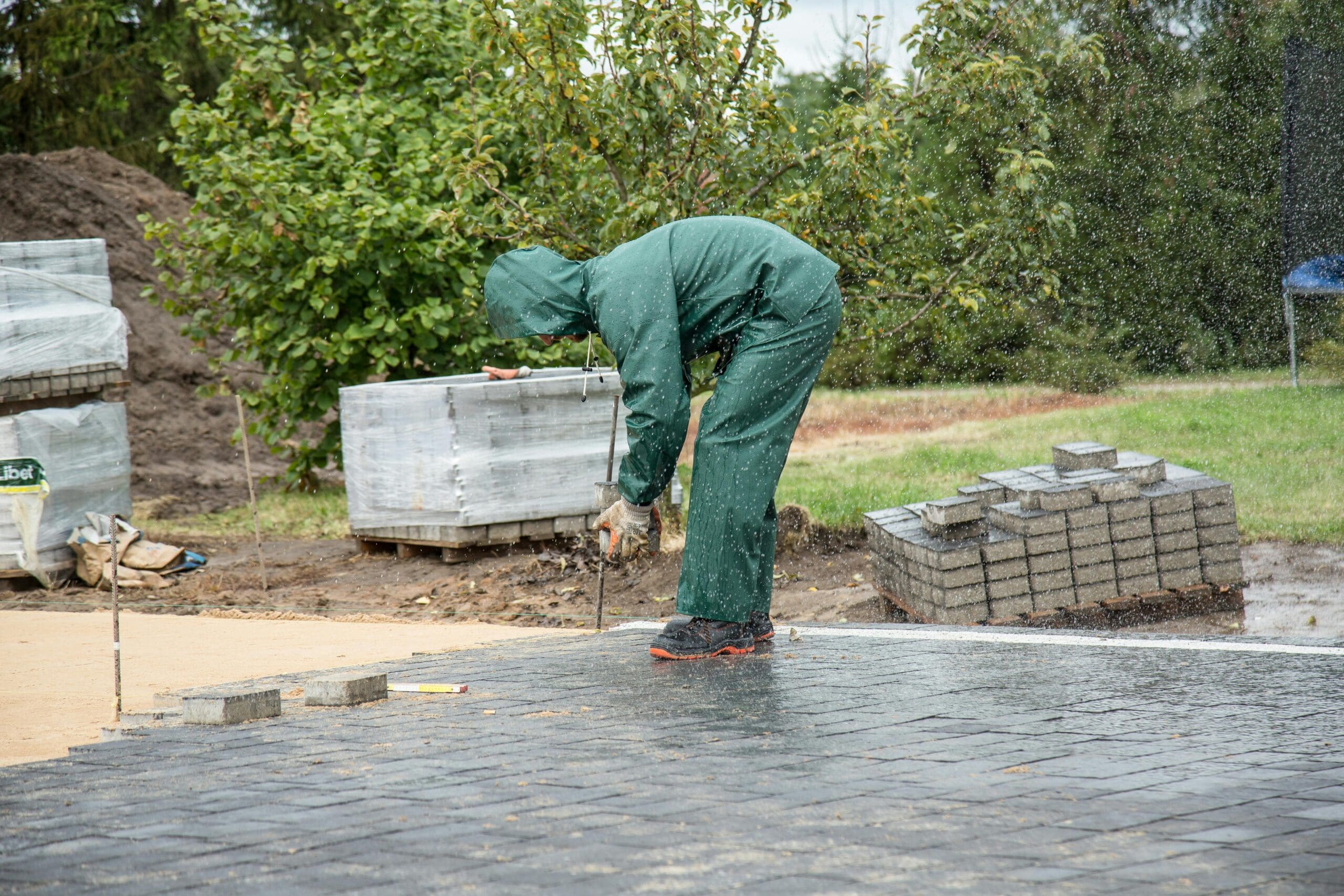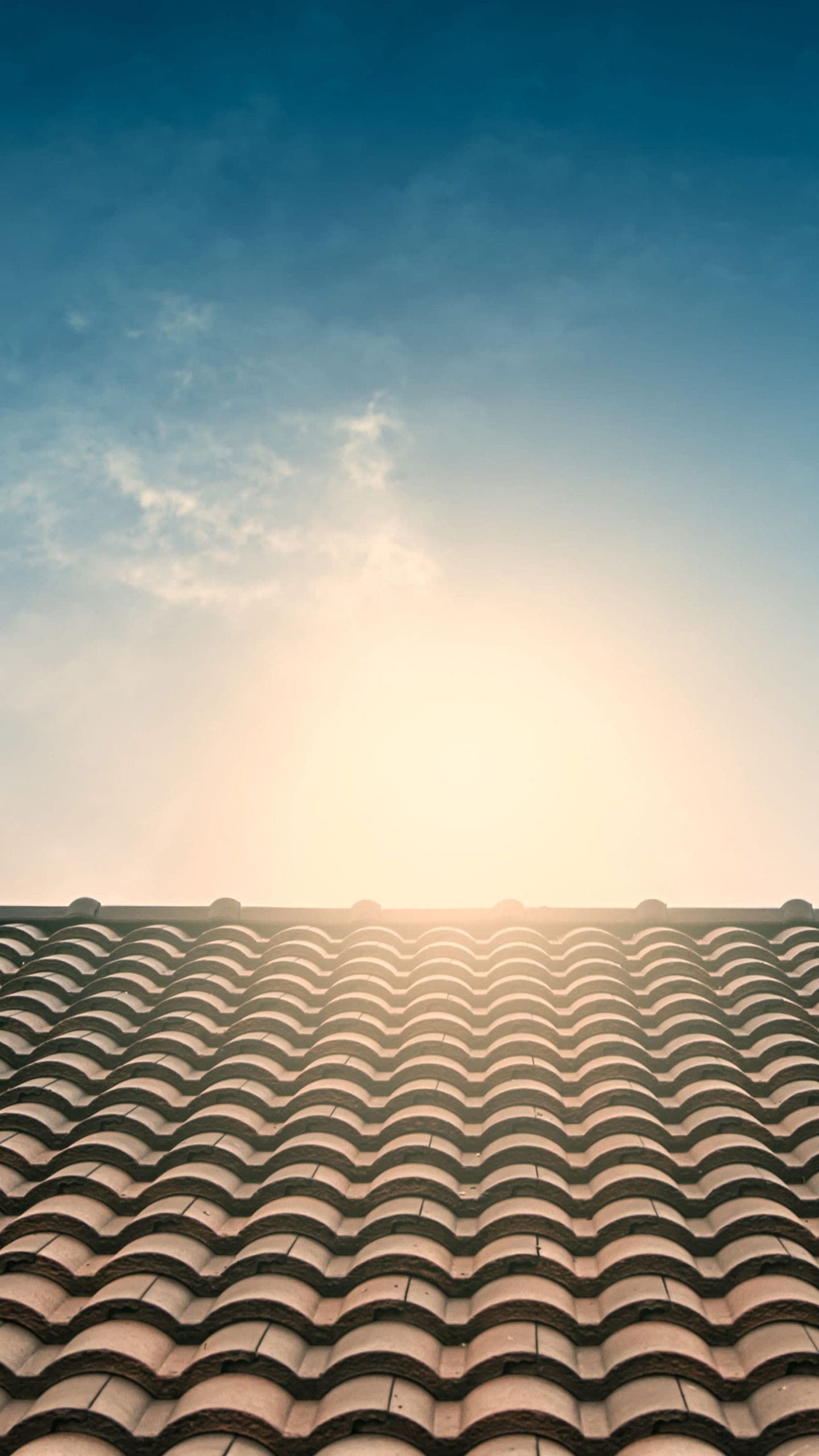Choosing the best roofing material comes down to answering three main questions:
- What can I install?
- What do I like?
- How much do I want to spend?
While there are dozens of different roofing materials online, a quick drive through your neighborhood will give you a great idea as to what most homeowners actually end up choosing. That’s why this post will focus on the pros and cons of the following:
- Asphalt Roll (Torch Down)
- Asphalt Shingles
- Tiles
- Metal Roofing
What can I install?
Before comparing different roofing materials, it is important to note that only certain materials can be installed on specific properties. So before you fall in love with clay tiles or slate roofing, let’s take a look at some of the most important factors that determine what you’ll be able to install.
Slope of Your Roof
The incline of your roof, or its pitch, is one of the primary factors in material selection.
A flat roof typically has a slope of less than 5% or 0.5:12. A low-slope roof typically has a slope of 5-15% or up to 2:12. A high-slope roof typically has a slope of 15% or greater than 2:12.
Flat roofs will generally take a product like asphalt roll, PVC roofing membrane or modified bitumen. These roofs are usually the least expensive to install and least visible to the public. They are also, however, the worst at shedding water and debris and therefore need to be replaced the most often.
Low-slope roofs generally have more material flexibility which can allow for product types ranging from terra cotta tiles to the wide variety of shingles on the market today. Make sure to check the manufacturer’s warranty though as some warranties will void if the slope is too high or too low.
Steep-slope roofs are what you typically see on most homes in Southern California. The most popular options tend to be asphalt shingles and clay tiles though other options such as metal roofs are starting to become more popular as well. These roofs tend to be more expensive but are much better at shedding water and debris.
If you’re not sure what the slope of your roof is, you can do some measuring and math, use a digital level or have a roofing company inspect your roof.
Local Requirements
Most new and replacement roofs in California must meet the same basic requirements as any other roof in America except California, of course, has added a few more regulations as well.
The state has introduced Solar Reflective Index (SRI) requirements to the title 24 building code to help minimize the ‘heat island’ effect we’re facing. This is why you’ll often see lighter roofs being installed on both commercial and residential properties throughout LA and Orange County.
Areas susceptible to wildfire or extreme heat may demand roofing materials with higher fire resistance ratings, impacting your material choice. This is one of the reasons why wood shake, wood shingles and other types of wood roofing are no longer allowed to be installed in the state of California.
Also, many homes covered by an HOA or other form of community management have their own list of acceptable roofing products that can be installed. Some agreements will specify the brands and colors that are allowed while other will more broadly state something like “all roofs must be maintained and meet community guidelines.”
Roof Structure
The last factor influencing what type of roofing you can install is the structure of the roof itself. Every home in Southern California was (hopefully) built to meet local and national codes but each roof structure is only capable of carrying a certain amount of weight.
This typically isn’t an issue if your roof replacement is like-for-like such as replacing asphalt shingles with other shingles. The issue presents itself when trying to convert a lower weight roofing material like shingles with a higher weight material like clay tiles.
Not only do clay tiles cost more than shingles to install, they can weigh 2-3 times more as well. That means that some homes will require framing additions/modifications which can make the overall cost of the project skyrocket.
What do I like?
Now that you have a better understanding of product types that are available for your home, we get to the way-more-fun part: exterior design.
Materials and Colors
The various roofing materials offer distinctive aesthetic appeals.
Asphalt shingles come in a wide variety of colors, patterns and variations. Some of the biggest roofing manufacturers out there including Owens Corning, GAF and CertainTeed help their customers filter their shingles by color. You can choose from classic browns and grays or go more bold with greens, blues and even purples!
Tile roofing is starting to get more interesting. Clay tiles have been around for ages and are usually in the range of browns, oranges and reds. Slate tile is an up-and-coming option that offers better durability than clay and comes in striking grays, blacks and more. Composite tiles, as the name suggests, can be made with different mixtures of products and can be found in a multitude of colors.
Metal roofs tend to get a strong reaction; you either love them or you hate them. Metal roofs are usually found in shingle or standing seam patterns and can be made in essentially any color.
One of my personal favorite roofing options out there is green roofing. Green roofs are roofing systems comprised of a waterproofing membrane on the bottom and some sort of grass or vegetation on top. Beyond being unique and beautiful, they greatly outperform other roofs for SRI, R-value and sound transmission.
Green roofs are still a new technology though which means there aren’t very many systems available and they’re cost-prohibitive.
Solar roofing is another option that may make more sense in the future as the technology is developed. The idea of having an entire roof produce solar energy rather than just a few panels is brilliant. The current options on the market, however, cost far more than the savings they’re able to produce…even in sunny Southern California.
How much do I want to spend?
Trying to get a real price on a new roof is waaayyyy harder than it should be. Most contractors in today’s market don’t advertise their pricing online because they think they’ll lose business that way. The tried-and-true method of getting new construction business hasn’t changed in a long time: you tell someone you can’t give a price without seeing the home first, you book an in-home appointment and then you sell, sell, sell!
A quick look online will provide many results but few of them are helpful. If a site says an average roof replacement costs somewhere between $9,000-$25,000, does that actually help you make a buying decision?
One of the goals at Stanton RECC is to provide transparent information on important considerations such as pricing. So while there are multiple factors that could increase or decrease the following pricing and lifespans, use this information as a guide to help you choose the best roofing material for your property.
Roofing Materials: How much do they cost and how long will they last?
Flat Roofs
Asphalt Roll (Torch-Down)
- Install Cost – $6/sqft
- Typical Lifespan – 5 to 10 years
- Durability and Maintenance – We do our best to talk everyone out of asphalt roll roofing as the cost savings up front are not worth it in the long run. Many of these roofs experience product failure within 5 to 10 years and the underlying sheathing often needs to be replaced as a result.
Modified Bitumen (Mod Bit)
- Install Cost – $7.50/sqft
- Typical Lifespan – 15 to 20 years
- Durability and Maintenance – While similar to asphalt roll in installation, most mod bit products perform better and last longer. Also available in a wider variety of colors, this is a popular choice for many commercial buildings and residential community garages.
Spray Polyurethane Foam (SPF)
- Install Cost – $5 to $10/sqft
- Typical Lifespan – 30 to 50 years
- Durability and Maintenance – Not nearly as common as the first two types of flat roofing material, SPF is gaining popularity due to the speed of installation and because it can often be installed on top of the existing flat roof.
Low and Steep Roofs
Shingles
- Install Cost – $7.50/sqft
- Typical Lifespan – 20 to 30 years
- Durability and Maintenance – This is the most common type of roofing you’ll see in Southern California and for good reason. Modern shingles provide a good mix of affordability, aesthetics and durability.
Composite/Synthetic Tile
- Install Cost – $15/sqft
- Typical Lifespan – 30 to 50 years
- Durability and Maintenance – For homeowners looking to replace their current roofing with tiles, composite or synthetic tiles are one of the best options available. These come in a wide variety of shapes and colors and some manufacturers will even provide a 50-year warranty on their products.
Natural Clay Tile
- Install Cost – $25/sqft
- Typical Lifespan – 30 to 50 years
- Durability and Maintenance – Natural clay tile is more expensive than composite tiles and typically provide a shorter lifespan. While it is true that clay tiles can last 100+ years in the right conditions, they are also relatively brittle and often crack when walked on or in certain weather events.
Metal Roofing
- Install Cost – $25/sqft
- Typical Lifespan – 30 to 50 years
- Durability and Maintenance – Metal roofs are increasingly popular on commercial buildings due to their low maintenance needs and excellent durability. Many of these roofing systems carry warranties beyond 30 years and perform well in rain, snow and wind.
Generally speaking, higher-priced roofing products last longer than their lower-priced alternatives. That being said, there are very few real-world examples of roofing products lasting 50 to 100 years.
And did you know that the average Californian spends less than 5 years in their home? While this data may not apply to your situation, it might not make sense to spend extra money to install a 50-year roofing product if you’ll only be in the home 5 to 10 years.
Conclusion
Going back to the beginning of this post, you’ll need to answer three main questions before choosing the best roofing material for your property:
- What can I install?
- What do I like?
- How much do I want to spend?
Your home will help you answer the first question as certain options will be unavailable based on the pitch of your roof and where you live.
Your personal preferences will help you answer the second question as each person will naturally gravitate towards whichever product is most aesthetically pleasing.
The last question largely comes down to comparing the up front cost of the material you prefer to the ongoing maintenance and expected lifespan of the roofing product. Remember, spending less up front doesn’t mean you’ll spend less overall.
We hope this post helps point you in the right direction.
Please let us know if there’s anything we can do to help you choose the best roofing material for your home!

